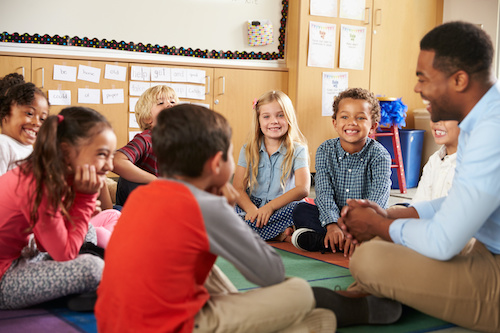Key points:
- Educators are the essential ingredient in today’s classrooms–here’s what they’re doing to help students succeed
- 6 trends to watch in K-12 schools in 2024
- Student engagement requires more than edtech tools
- For more news on teaching trends, visit eSN’s Innovative Teaching hub
Educators today face myriad challenges in their classrooms, including low student engagement, staffing issues, funding shortages, and gaps in opportunity and access.
But despite these challenges, there are bright spots in teaching and learning. Inspiring district leaders, classroom teachers, and school staff have found unique and innovative ways to engage students in learning, motivating students to see beyond classroom walls and truly immerse themselves in learning.
Here’s what today’s educators have to say about AI, STEM, SEL, and more:
In 2024, education will move to adopt AI–but slowly. Students are already using artificial intelligence tools, so now is the time for educators to catch up by learning how AI can improve teaching and learning, says Julianne Ross-Kleinmann, an Instructional Data Analysis and Technology Specialist with Ulster County BOCES. In the coming year, early adopters will continue to play with new AI tools to see how they can be used in education. They will have some amazing successes–and some failures–as they light the way forward and the rest of us endlessly discuss the potential uses and abuses of AI in our classrooms. Read more about Ross-Kleinmann’s thoughts on AI in schools.
PBL isn’t used enough–let’s change that. The pedagogical approach to brings learning to life for students through hands-on engagement that lends itself to both differentiation and personalization, writes Kendall Stallings, a first grade teacher in Baltimore County. However, PBL is one of the most sensible solutions to the variety of needs teachers must try to meet for each student because it allows student autonomy and targets specific areas. The concept hinges on the idea that students complete a project on a single topic–ideally, they choose their own topics to promote interest and motivation–and, in doing so, dive deeply into that topic, ultimately becoming an expert on it. Projects can be individually completed or a collaborative effort, promoting group work and social skills. Because students control their learning in the PBL approach, differentiation is simple, if needed at all, as students conduct their own learning at their own pace and present their learning in a mode that makes sense to them. Find more PBL insight from Stallings here.
Elementary-level STEM education fosters our future innovators. Dr. Yuvraj Verma, a teacher at Chalkville Elementary School in Alabama, notes that investing in STEM education from an early age nurtures the next generation of innovators, problem-solvers, and leaders. Elementary school years mark a critical phase in a child’s cognitive development. It is during this period that introducing STEM education thus becomes paramount so as to establish a solid foundation of fundamental concepts and problem-solving skills. These foundational years offer a unique opportunity to spark curiosity and creativity, thereby providing the basis for more advanced learning in later grades and beyond. Dive into Dr. Verma’s argument for elementary-level STEM.
Data can empower districts to align teaching with student needs. Teachers can model responsible decision making, positive relationship building and other important SEL skills in everyday interactions, says Dr. Michael Mallery Jr., District Administrator for Social Emotional Learning with Windsor Public Schools. Perhaps the most innovative aspect of the district’s SEL program is its use of data to understand the impact of SEL efforts and inform change that enables district leaders to make efforts more effective. The district implemented Devereux Student Strengths Assessment (DESSA), a nationally standardized, strength-based behavior rating scale for social and emotional competence. Data generated by this brief questionnaire helps educators screen, assess, guide intervention planning, monitor progress and evaluate outcomes related to SEL. Learn more about Dr. Mallery’s use of data in guiding SEL efforts.
It’s possible to build student engagement in STEM classrooms. With the push to build STEM literacy and get more students–especially girls–into STEM fields, engagement is needed across science disciplines, notes Steve Millam, a physics and astrophysics teacher at Chaparral High School. It’s critically important to continue to find new ways to keep students inspired and engaged in STEM learning. The same is true–and arguably more important–for students who are less interested in science and STEM fields. Engagement, after all, is a critical contributing factor to students pursuing a STEM pathway in college and in the workforce. Here are 3 strategies Millam uses to build STEM engagement.
- Friday 5: Virtual field trips - April 26, 2024
- Google, MIT RAISE launch no-cost AI training course for teachers - April 26, 2024
- 4 ways to support work-based learning - April 23, 2024

